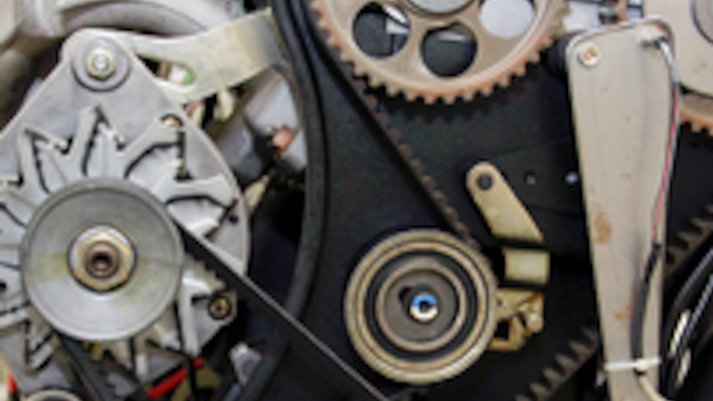Mechatronics, micro- and optotechnology
Automated parking, unlocking your cell phone with a fingerprint - the complex interaction of sensors, actuators, lasers, radar and more is playing an increasingly important role in our everyday lives. To make this work, several technical disciplines work together in a pioneering way: Mechatronics, microtechnology and optotechnology.

Overview of the academic discipline
Study programs in this field have one thing in common: at the interface between electronics, computer science, mechanics, sensor technology and measurement technology, they deal with the processing and use of information and solve technical and medical problems.
- Mechatronics combines content from the classic engineering disciplines of mechanical engineering and mechanics, electrical engineering and electronics as well as computer science. Interdisciplinary and systems engineering thinking play a major role here.
- The degree course in Microtechnology and Microsystems Technology also combines subject areas from computer science, micro-optics and micro-electronics as well as micromechanics and is therefore highly interdisciplinary.
- The Photonics and Optical Technologies degree courses focus on the properties of light and its potential applications, for example in optical metrology and laser technology.
- The disciplines of ophthalmic optics/optometry are also part of the field of optotechnology. Unlike in photonics, however, prospective optometrists apply their engineering skills explicitly to the human eye.
Which topics are included in the curriculum?
Despite strong overlaps in content, the individual fields of study sometimes differ considerably in detail:
- In the Bachelor's degree programme in Mechatronics, modules teach basic skills from the subjects of mathematics and physics as well as engineering subjects such as technical mechanics, electrical engineering, electronics and electronic components, circuit technology, computer science, digital technology, control technology, signals and systems, Statics, dynamics, design engineering, system design, electrical CAE (computer-aided engineering), electrical drive technology, control engineering, signalling technology, sensor technology, measurement technology, robot systems, automation, thermodynamics and fluid dynamics, materials, technical optics and lighting technology, hydraulics and pneumatics. There are also supplementary modules in English, business administration/accounting, project management and law.
- In Microtechnology, Microsystems Technology, students complete modules on the basics of mathematics, physics, chemistry, technical mechanics, electrical engineering, technical optics, materials technology, technical design drawing/CAD, components and circuit technology or technical programming. Subsequently, application-related knowledge is taught in subjects such as computer science, electronics, microprocessor technology, signals and systems, signal processing, biomaterials, measurement and control technology, design methodology, introduction to modelling and simulation, production techniques and technical optics.
- The course content in optotechnology includes mathematics, physics, image processing, programming, technical optics, precision engineering, measurement and control technology, sensor technology, laser technology and signal processing.
- Ophthalmic optics, optometry stands out somewhat due to its medical focus on the human eye - this is noticeable in modules such as anatomy and physiology, binocular vision, ophthalmoscopes, skiascopy or physiological optics. There are specialisation options in areas such as medical technology, ophthalmology or medical imaging techniques.
During the degree programme there are usually practical phases, sometimes a work placement semester.
What are the requirements?
Some universities require a pre-study work placement lasting several weeks. For the optometry degree programme, some universities require a completed vocational training as an optician and in some cases even a completed master craftsman qualification. In addition to maths, physics and computer science are also important school subjects.
What study programmes are there to choose from?
There are degree programmes in this field at universities and universities of applied sciences. Most universities offer the option of continuing the undergraduate degree programme with a Master's degree.
What job opportunities are there after graduation?
The subsequent career opportunities are as broad as the field of study:
- Mechatronics engineers work in all major sectors of mechanical and plant engineering as well as electrical engineering and electronics. They are needed in companies in the automotive and aviation industries, vehicle technology, automation technology, robotics, microsystems and precision engineering, print and media technology, the audio and video industry and medical technology.
- Engineers specialising in microtechnology work primarily in manufacturing companies for precision and microtechnical products, including information technology devices, consumer electronics, optics and photographic technology, measurement and control technology, sensor technology, medical technology, production and assembly technology, household appliance technology, safety technology and vehicle construction.
- Thanks to the interdisciplinary nature and wide range of applications of optical technologies, graduates find employment opportunities in companies in the optics industry, medical and environmental technology, the information and telecommunications industry, the automotive industry and numerous other manufacturers of optical parts and components.
- Graduates in ophthalmic optics/optometry manage specialist optician's shops and production facilities in the optician's trade, and they also find a professional home in eye clinics or rehabilitation facilities, where they work closely with ophthalmologists.
Graduates in all areas are also employed in research and development institutions in their respective fields.
